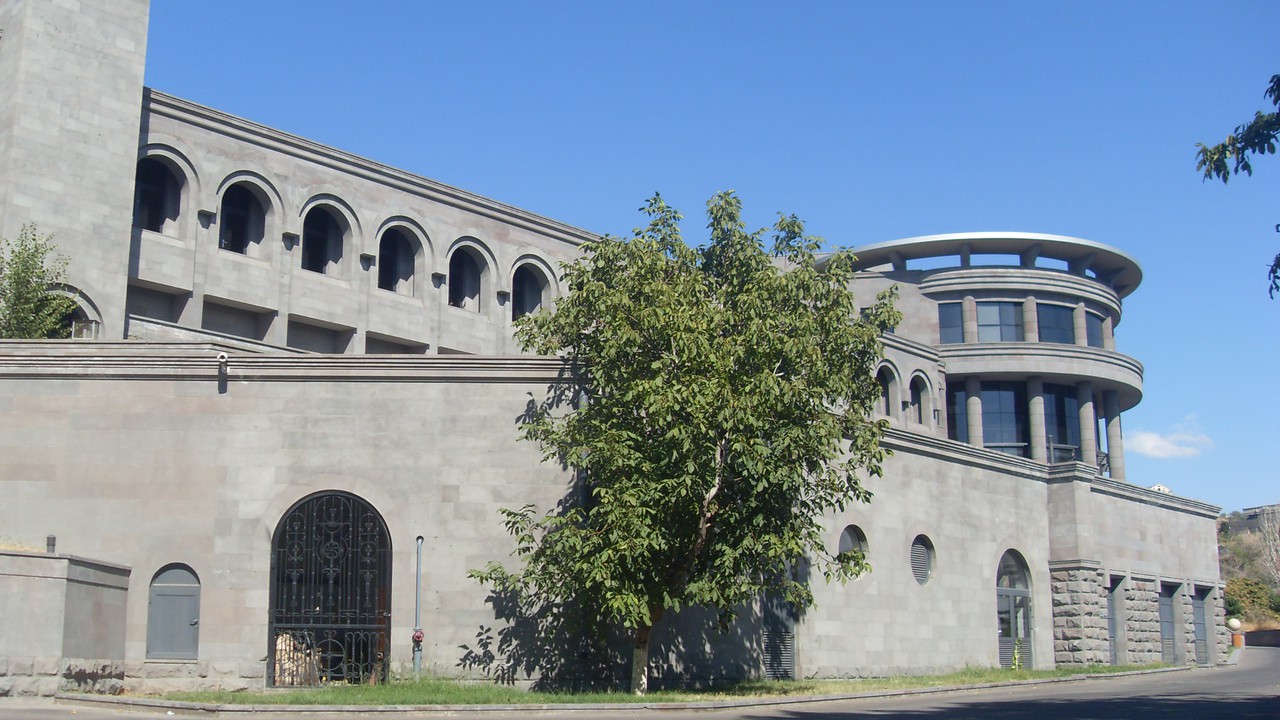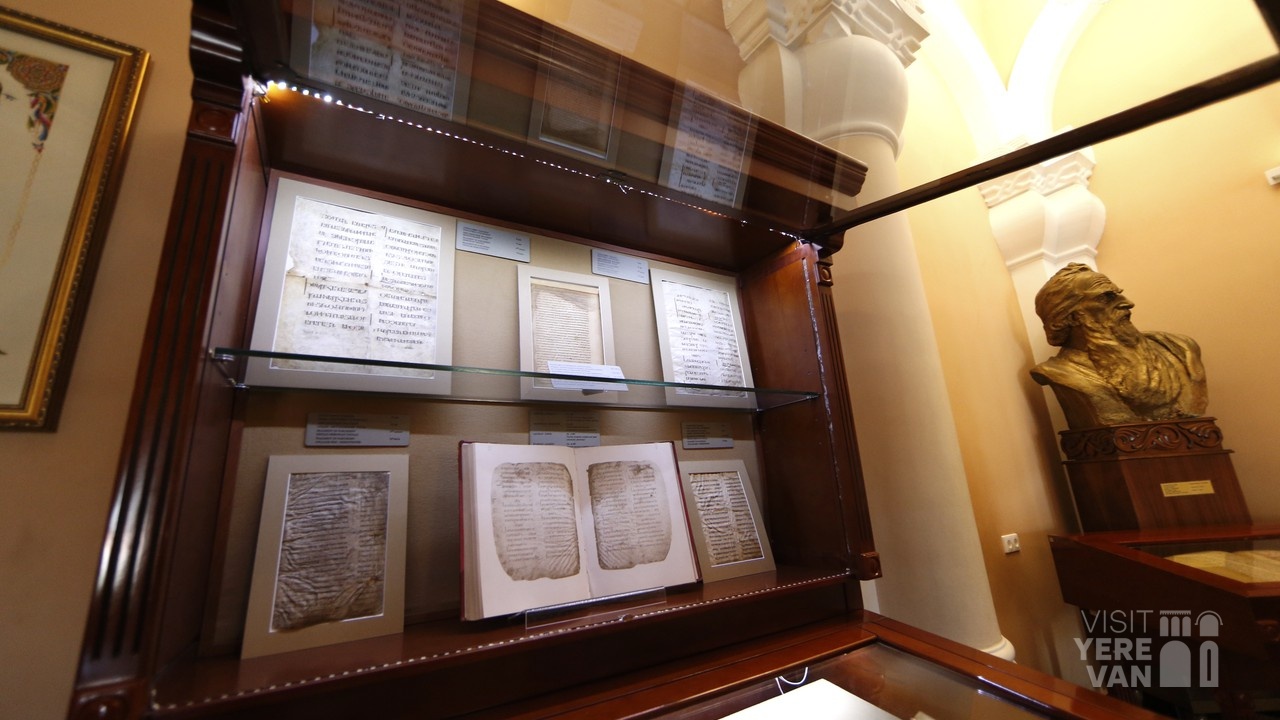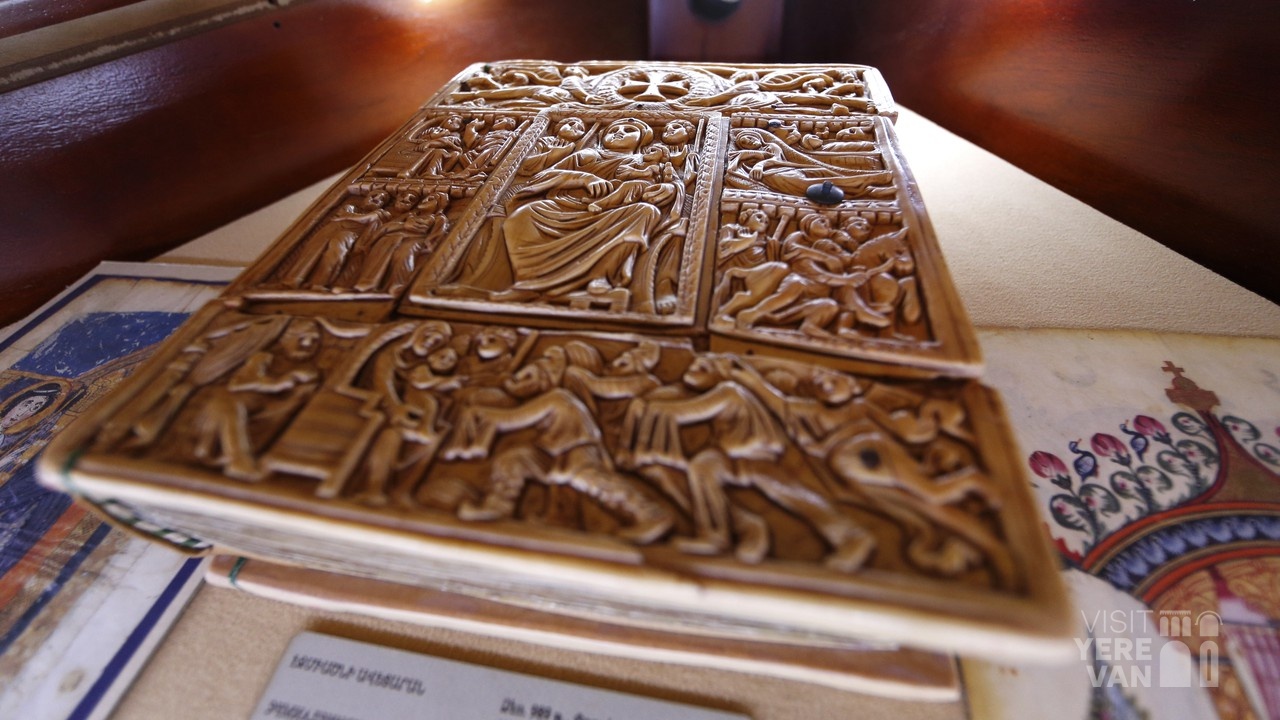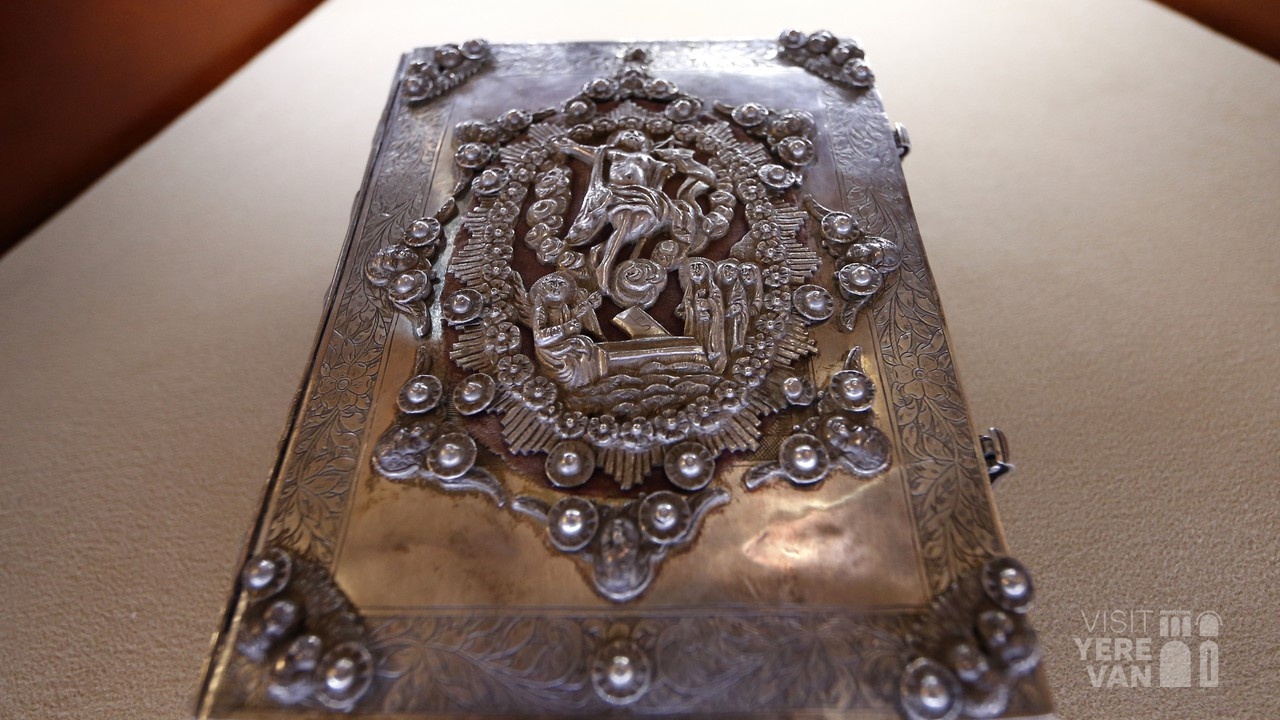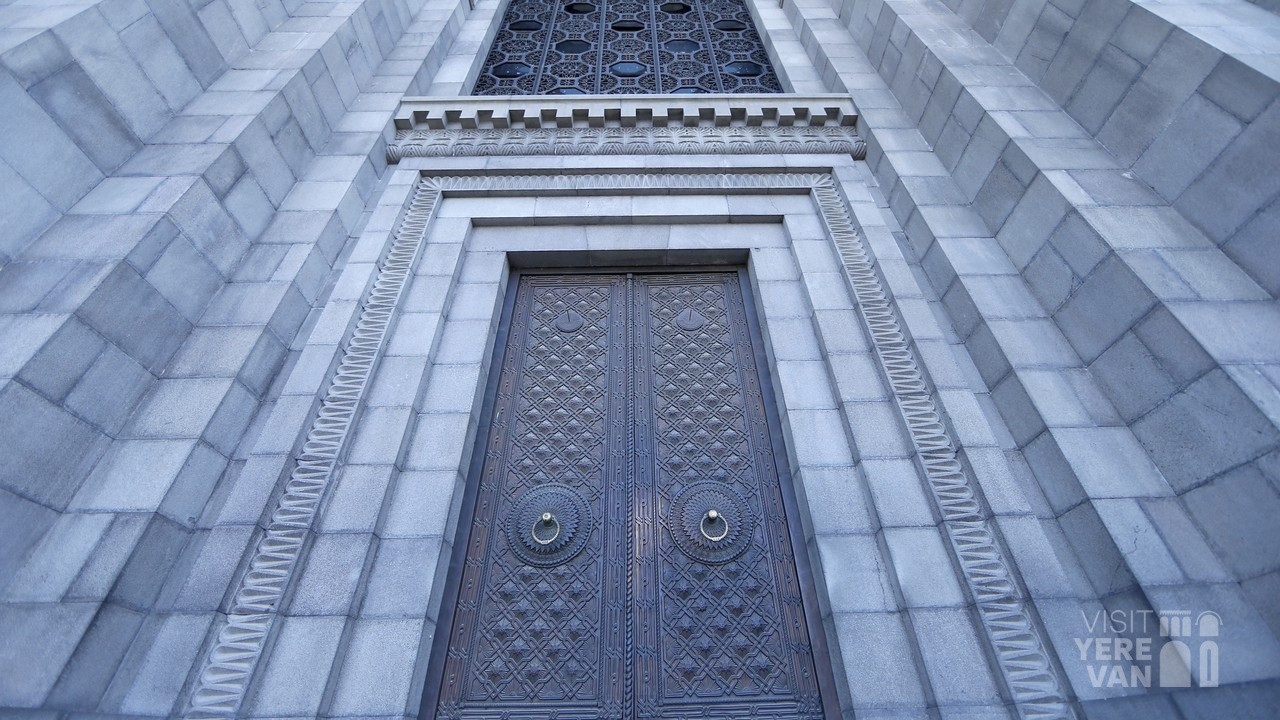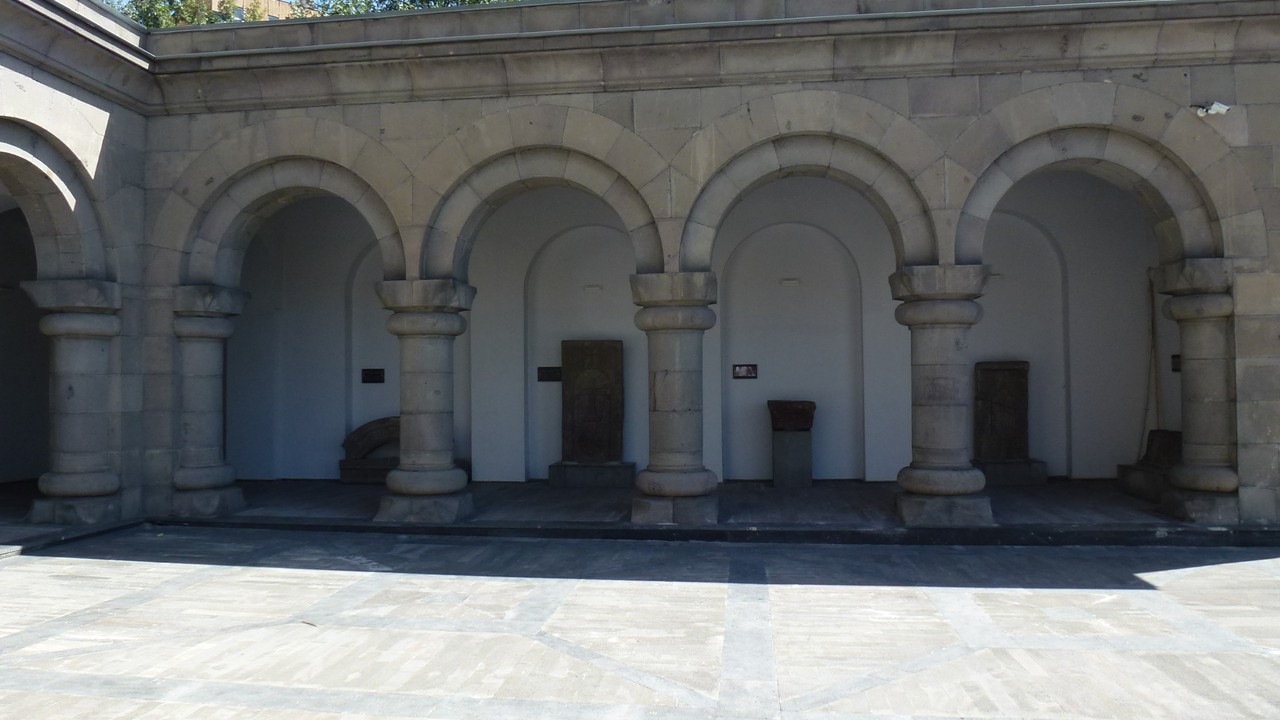UNIQUE PLACES
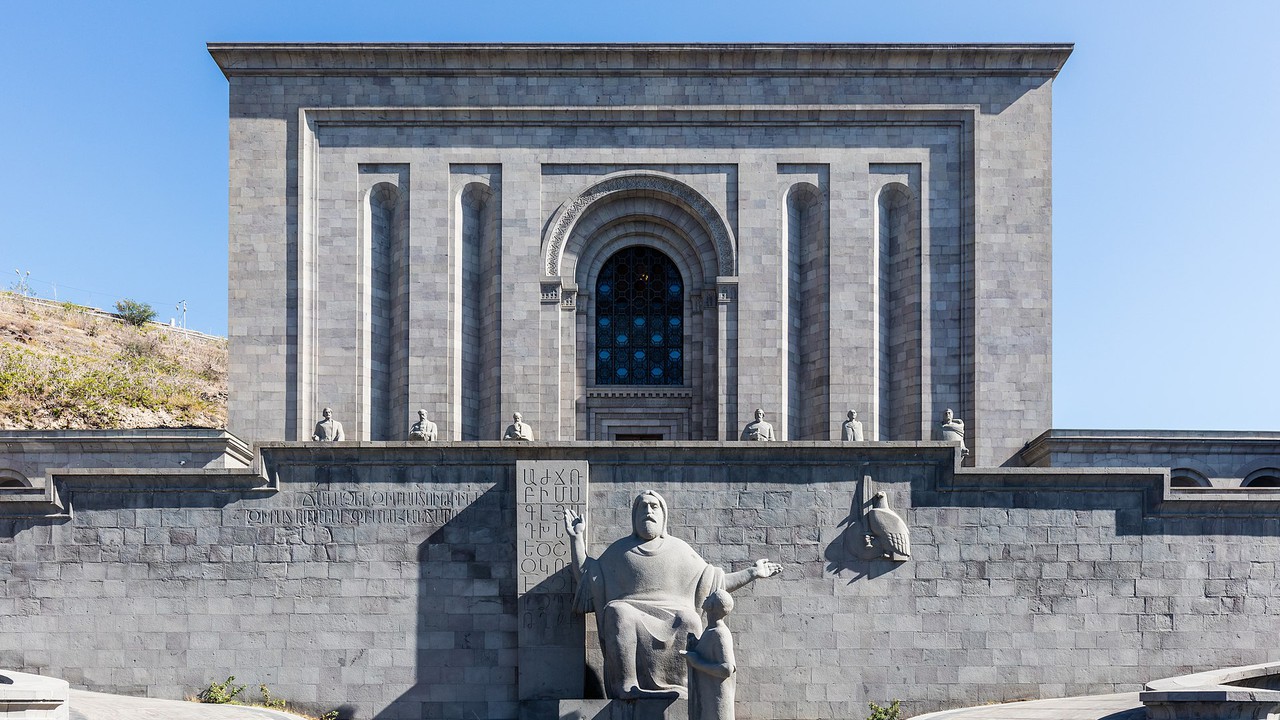
"MATENADARAN" MESROP MASHTOTS SCIENTIFIC RESEARCH INSTITUTE OF ANCIENT MANUSCRIPTS
The Matenadaran is a unique repository of exclusive and valuable manuscripts, a treasury of the intellectual heritage of the Armenian people, a museum and a scientific research institute.
1957
The Matenadaran is a unique repository of
exclusive and valuable manuscripts, a treasury of the intellectual heritage of
the Armenian people, a museum and a scientific research institute, which has
universal value. In 1997. It was registered on the UNESCO Memory of the World
List and is considered one of the most important places for the preservation
and development of the Armenian national memory. Currently, the approximately
23,000 manuscripts (Armenian, Greek, Arabic, Persian, Assyrian, Latin, Ethiopian,
Georgian, Hebrew, etc.) and approximately 300,000 archival documents stored
here cover almost all areas of ancient and medieval Armenian science and
culture: history, geography, grammar, philosophy, law, medicine, mathematics,
cosmology, archaeology, translated and national literature, miniature painting,
music, and theater. Thanks to the Armenian translations made in the Middle
Ages, numerous originals not preserved in the mother tongues were saved from
loss. Matenadaran (meaning repository of manuscripts, a repository of
manuscripts, a collection), as the first scientific research institution in the
Armenian SSR, was established in 1921 on the basis of the manuscript collection
of Echmiadzin. Initially, it was called the Cultural and Historical Institute.
In 1939, it was moved from Echmiadzin to Yerevan and operated in the Public
Library building. The design of the main building began during the Great
Patriotic War, and was built by the design of Mark Grigoryan (1900-1978),
Honored Artist of the Armenian SSR, Honored Architect, Chief Architect of
Yerevan from 1937 to 1951. Construction was completed in 1957.
The Matenadaran was moved to a new
building in 1959 and, by decision of the Armenian SSR government, was
transformed into the Scientific Research Institute of Ancient Manuscripts.
Since 1962, it has been named after Mesrop Mashtots.
In 1978, book depositories were built on
the northern slope.
The main building is a four-story,
monumental building with a basement, built of gray basalt, in the
"midis" arrangement. The height to the eaves is 22.4 m. The facades
are designed in a strict and laconic style. The interior is designed according
to the constructive and stylistic principles of Armenian medieval buildings
(vestibule, library). It is divided into vaulted areas with columns and arches.
In the lobby of the main building is the
mosaic "Avarayr Battle" (artist: Van Khachatur, 1960), from the main
staircase leading to the second floor is visible the three-part fresco
"History of Armenian Culture" (artist: Van Khachatur, 1959). In 1961
The interior with 40 ceramic works was designed by Armenian potter, painter,
People's Artist of the Armenian SSR Hmayak Bdeyan, and in 1977 his sculptures
"Pen" and "Flowering" were also installed. Near the main
facade of the building, on separate pedestals, are placed the statues of
prominent figures of medieval Armenian culture: Anania Shirakatsi (sculptor:
Grigor Badalyan, 1963), Movses Khorenatsi (sculptor: Yerem Vardanyan, 1964),
Mkhitar Gosh (sculptor: Ghukas Chubaryan, 1967), Toros Roslin (sculptor: Arsham
Shahinyan, 1967), Frik (sculptor: Suren Nazaryan, 1967) and Grigor Tatevatsi
(sculptor: Arsham Grigoryan, 1967). Along the main axis of the building, near
the retaining wall, there is a group of statues of Mesrop Mashtots, the founder
of the Armenian alphabet, and his famous student Koryun (sculptor: Ghukas
Chubaryan, 1962). The first sentence in Armenian is engraved on the retaining
wall: “To know wisdom and
instruction; to perceive the words of understanding.”
The open-air museum of the low arched
halls adjacent to the building exhibits valuable monuments brought from
different parts of Armenia: a dragon stone (2nd-1st millennium BC), a monument
“Dur” (brought from the Red Hill, 7th century BC), cross-stones (1294, 1545,
1596, 1604), an inscribed tombstone (XVII), etc.
In order to expand the activities of the
Matenadaran and replenish the manuscript collection, a new building was
designed in 1987-1988 (architect: Arthur Meschyan). Construction began in 1988,
but was interrupted after the devastating Spitak earthquake. The groundbreaking
ceremony for the new building took place on May 14, 2009, in the back of the
main building. It was built in 2009-2011. It is consistent with the main
building in terms of its spatial solutions, and exceeds it by 4 times.
The main building was renovated and
turned into a museum building, quadrupling the exhibition areas.
The construction of the Matenadaran
building is also important from an urban planning point of view: with its
volume, it organizes the end of Mashtots Avenue and that part of the city in
general.
The Matenadaran is an internationally
recognized and highly rated institution that has become one of the landmarks of
Yerevan.

